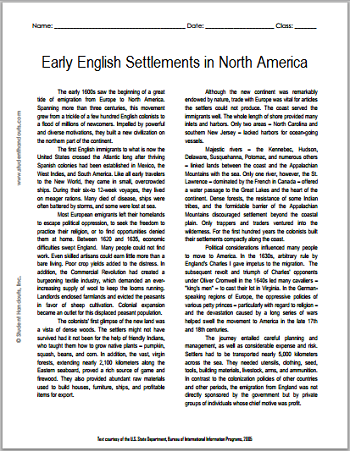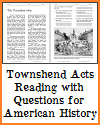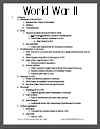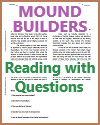Early Settlements |
 The early 1600s saw the beginning of a great tide of
emigration from Europe to North America. Spanning more than
three centuries, this movement grew from a trickle of a few
hundred English colonists to a flood of millions of newcomers.
Impelled by powerful and diverse motivations, they built a new
civilization on the northern part of the continent. The early 1600s saw the beginning of a great tide of
emigration from Europe to North America. Spanning more than
three centuries, this movement grew from a trickle of a few
hundred English colonists to a flood of millions of newcomers.
Impelled by powerful and diverse motivations, they built a new
civilization on the northern part of the continent.The first English immigrants to what is now the United States crossed the Atlantic long after thriving Spanish colonies had been established in Mexico, the West Indies, and South America. Like all early travelers to the New World, they came in small, overcrowded ships. During their six-to 12-week voyages, they lived on meager rations. Many died of disease, ships were often battered by storms, and some were lost at sea. Most European emigrants left their homelands to escape political oppression, to seek the freedom to practice their religion, or to find opportunities denied them at home. Between 1620 and 1635, economic difficulties swept England. Many people could not find work. Even skilled artisans could earn little more than a bare living. Poor crop yields added to the distress. In addition, the Commercial Revolution had created a burgeoning textile industry, which demanded an ever-increasing supply of wool to keep the looms running. Landlords enclosed farmlands and evicted the peasants in favor of sheep cultivation. Colonial expansion became an outlet for this displaced peasant population. The colonists' first glimpse of the new land was a vista of dense woods. The settlers might not have survived had it not been for the help of friendly Indians, who taught them how to grow native plants – pumpkin, squash, beans, and corn. In addition, the vast, virgin forests, extending nearly 2,100 kilometers along the Eastern seaboard, proved a rich source of game and firewood. They also provided abundant raw materials used to build houses, furniture, ships, and profitable items for export. Although the new continent was remarkably endowed by nature, trade with Europe was vital for articles the settlers could not produce. The coast served the immigrants well. The whole length of shore provided many inlets and harbors. Only two areas – North Carolina and southern New Jersey – lacked harbors for ocean-going vessels. Majestic rivers – the Kennebec, Hudson, Delaware, Susquehanna, Potomac, and numerous others – linked lands between the coast and the Appalachian Mountains with the sea. Only one river, however, the St. Lawrence – dominated by the French in Canada – offered a water passage to the Great Lakes and the heart of the continent. Dense forests, the resistance of some Indian tribes, and the formidable barrier of the Appalachian Mountains discouraged settlement beyond the coastal plain. Only trappers and traders ventured into the wilderness. For the first hundred years the colonists built their settlements compactly along the coast. Political considerations influenced many people to move to America. In the 1630s, arbitrary rule by England's Charles I gave impetus to the migration. The subsequent revolt and triumph of Charles' opponents under Oliver Cromwell in the 1640s led many cavaliers – "king's men" – to cast their lot in Virginia. In the German-speaking regions of Europe, the oppressive policies of various petty princes – particularly with regard to religion – and the devastation caused by a long series of wars helped swell the movement to America in the late 17th and 18th centuries. The journey entailed careful planning and management, as well as considerable expense and risk. Settlers had to be transported nearly 5,000 kilometers across the sea. They needed utensils, clothing, seed, tools, building materials, livestock, arms, and ammunition. In contrast to the colonization policies of other countries and other periods, the emigration from England was not directly sponsored by the government but by private groups of individuals whose chief motive was profit. |
Directions: Read the text above, then answer the
questions below. |
1. What was the journey to North America
like for early English colonists? 2. What was happening in England between 1620 and 1635? 3. How did the Commercial Revolution in England affect peasant farmers? 4. How did Native Americans help early English colonists? 5. Why did early English colonists stick close by the Atlantic coast? 6. How did Oliver Cromwell's rule lead to immigration to Virginia? 7. Why were Germans drawn to North America? 8. Describe the role played by the English government in colonizing North America. |
Click here to print. |
 |
| Early America Books and Films | Early America Image Galleries |
| Early America Learning and Study Games | Early America Miscellany |
| Early America Outlines and PowerPoints | Early America Worksheets |
Text courtesy of the U.S. State Department,
Bureau of International Information Programs, 2005 |











